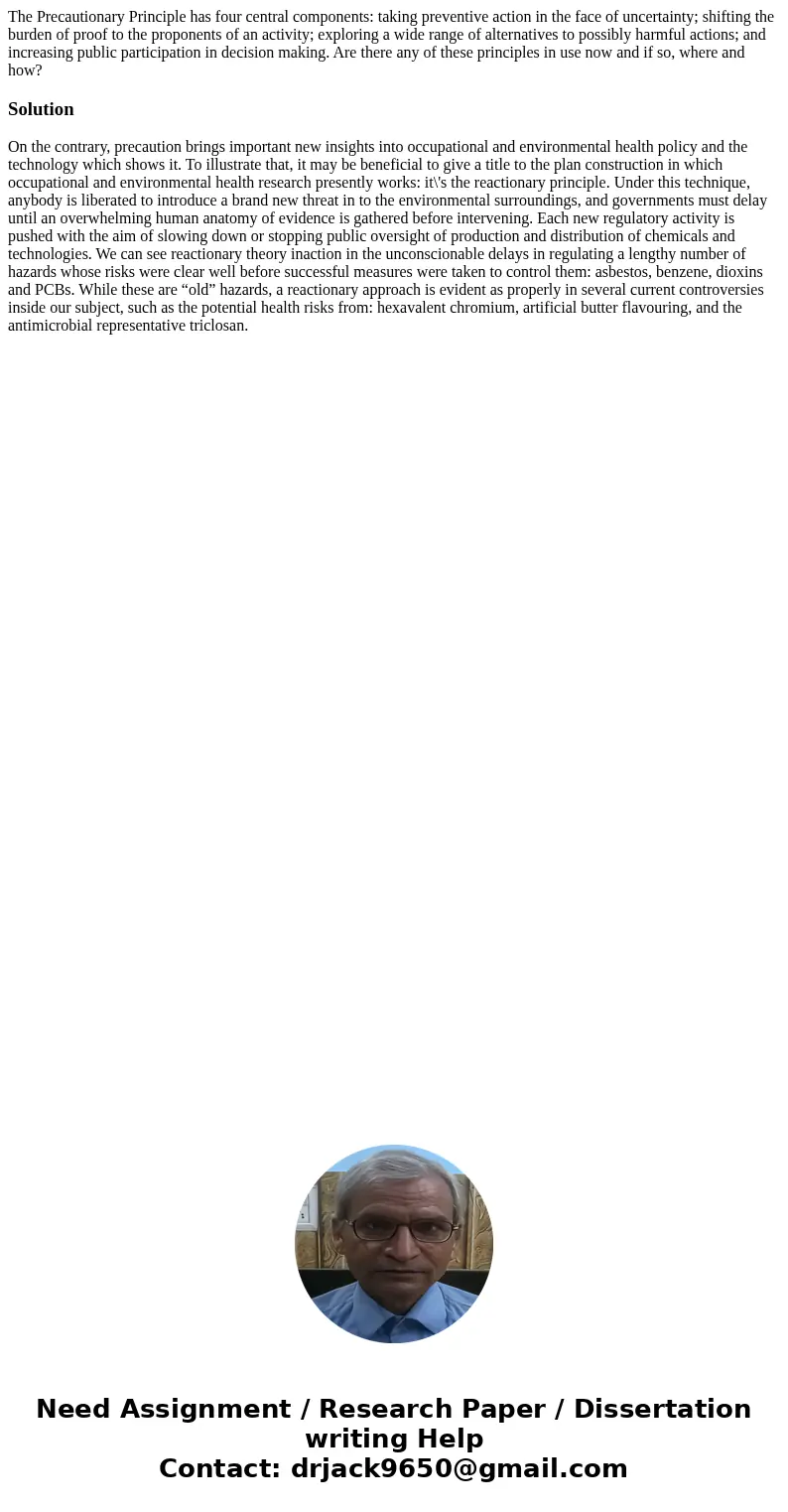The Precautionary Principle has four central components taki
The Precautionary Principle has four central components: taking preventive action in the face of uncertainty; shifting the burden of proof to the proponents of an activity; exploring a wide range of alternatives to possibly harmful actions; and increasing public participation in decision making. Are there any of these principles in use now and if so, where and how?
Solution
On the contrary, precaution brings important new insights into occupational and environmental health policy and the technology which shows it. To illustrate that, it may be beneficial to give a title to the plan construction in which occupational and environmental health research presently works: it\'s the reactionary principle. Under this technique, anybody is liberated to introduce a brand new threat in to the environmental surroundings, and governments must delay until an overwhelming human anatomy of evidence is gathered before intervening. Each new regulatory activity is pushed with the aim of slowing down or stopping public oversight of production and distribution of chemicals and technologies. We can see reactionary theory inaction in the unconscionable delays in regulating a lengthy number of hazards whose risks were clear well before successful measures were taken to control them: asbestos, benzene, dioxins and PCBs. While these are “old” hazards, a reactionary approach is evident as properly in several current controversies inside our subject, such as the potential health risks from: hexavalent chromium, artificial butter flavouring, and the antimicrobial representative triclosan.

 Homework Sourse
Homework Sourse